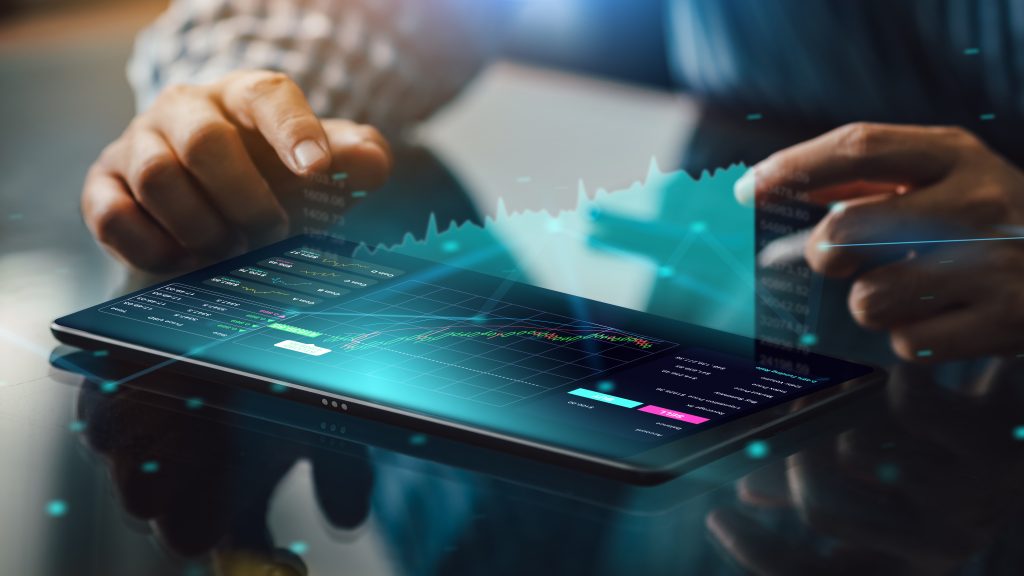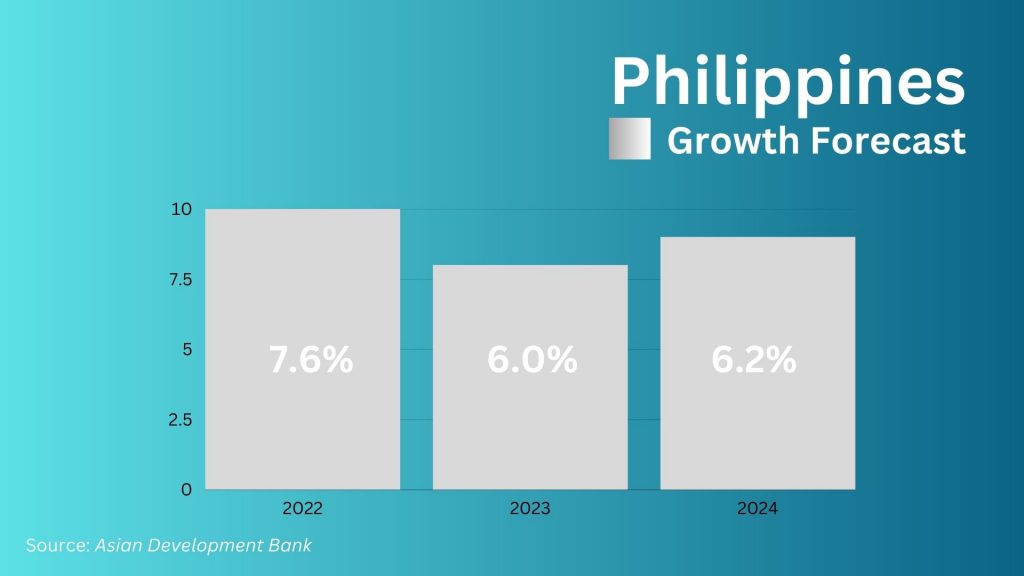Over the past few years, the COVID-19 pandemic, along with other international issues, has contributed to a global economic crisis. Although the Philippine economy is yet to achieve the economic expansion rates projected before 2020, there are significant prospects in many industries. Businesses can achieve healthy revenue growth in 2023 if they reassess their plans.
It would be inconceivable to understate the current economic crisis’ impact on finances and on humankind. Business leaders may take advantage of these changes and drive development and growth by foreseeing possible challenges and adjusting their strategy as the world continues to grow and recover from the pandemic. Let’s look into the Philippine Economy and its progress in the previous years.

What is the Status of the Philippine Economy Today?
In the subsequent quarter, the Philippine economy expanded at its weakest rate in over 12 years. Rising price inflation and interest rates dampened consumer confidence and reduced the monetary power of local currency against the US Dollar. In 2023, the growth of the gross domestic product (GDP) is expected to moderate to 6 percent due to difficult international conditions as reported by Mckinsey & Company.
Gross Domestic Product (GDP) growth suffered from a decrease in government spending following a rise due to the presidential election last year, which also slowed the expansion following the prior quarter’s 6.4% speed and the following quarter’s 7.1% pace of growth.
Fiscal Policies Being Implemented
By raising the policy rate to 6.25 percent, the Bangko Sentral ng Pilipinas (BSP) is attempting to stabilize inflation projections. However, rising overall inflation necessitates continued tightening.
In an effort to promote economic growth and ensure debt sustainability, fiscal reduction is now taking place. The medium-term budgetary austerity measures ought to be continued while increasing tailored social expenditure, encouraging investment in infrastructure, and supporting the goals of addressing climate change. The Philippines’ exposure to the turbulence in the world’s finance industry has been relatively modest, but tightening conditions call for vigilant financial sector surveillance.
Risks and Development Outlook
After the GDP shrank by 0.9% in the second quarter, the first contraction in 12 quarters, the economic outlook became bleak quarterly. That contrasted with experts’ forecasts expecting 0.5% growth and a downwardly altered 1.0% improvement in the March quarter.
After the serious recession brought on by the pandemic, the Philippine economy has seen one of the most remarkable turnaround among developing markets. Pent-up domestic demand was a significant factor in the 7.6 percent GDP growth reported in 2022, and the quarter one of 2023 growth of 6.4 percent was in accordance with the full-year prediction of 6 percent.
The primary risks to the projection are continuing elevated core inflation, constraints on weakened currencies in the context of tighter global circumstances, geoeconomic dispersion, and balance sheet effects associated with increasing lending rates. However, more benefits from China’s openness and a faster-than-anticipated rebound in capital might lead to greater growth than anticipated.
Sustaining Growth
According to Kelly Bird, country director for Asian Development Bank (ADB) Philippines, the Philippines will develop at its fullest potential over the coming year and is on pace to achieve its aim of being an upper middle-income nation. However, in doing so, the consequences of climate change and the implications of developing technology on the labor market will provide the Philippines economy with more challenges than those faced by other economies.
According to the research conducted by the ADB, inflation will typically reach 6.2% in 2023 before decreasing to 4.0% in 2024. As observed early in 2023, elevated prices, local food supply shortages, and escalating commodities costs worldwide contributed to the rise in inflation rates. The tightening of monetary policy measures is expected to come into effect in the latter part of 2023 and continue into 2024, while the prices of commodities worldwide are expected to drop.

Employment Rate
From 6.4% in January 2022 to 4.8% in January 2023, the nation’s jobless rate decreased to close to lower levels than before the pandemic. As the tourism industry began to recover from the COVID-19 epidemic, 4.1 million opportunities were created over the year, mostly in the services sector.
This encourages continued private spending, which should benefit from consistent remittances from Filipino workers abroad (OFWs). Technological innovations from large-scale industries are also driving growth for the Philippine economy. Among these industries are fintech, telecommunications, and eCommerce.
Work Environment Changes
According to an employment study by McKinsey & Company, further consideration is hybrid work, which has grown more common in the Philippines than traditional work environments. As businesses push for more hybrid working practices, office environments could be reimagined. This may result in occupancy rates remaining the same, but the rise of coworking spaces and the need for environmentally friendly structures will force improvements in building methods and lease terms, fostering sector-wide development.
Digital Economy
The pandemic has elevated the digital economy’s and eCommerce’s status to the retail industry’s forefront. Before the pandemic, worldwide online purchasing rose at a constant 4.5 percent yearly. Retailers who could migrate to digital platforms profited in general, whilst conventional merchants with poor online strategies suffered, with some famous ones declaring insolvency.
The Philippines provides an exciting market for eCommerce enterprises that were previously wholly untouched. The country has around 73 million current users of the internet, ranking second in Southeast Asia. Almost all of these people have an active presence on no less than a single significant social media network, and many have profiles on multiple ones because of the rising to engage with and promote to this potentially lucrative demographic.
Retail Services
Though COVID-19 has been brought under greater oversight in the country and limitations are starting to loosen, most customers believe that the pandemic has impacted their ordinary shopping and purchasing patterns. According to McKinsey & Company, up to 73% of Filipino customers want to continue or expand their online buying, citing ease of use and simplicity as essential motivators. As a result of this consistent flow of consumer demand, it stands to reason that numerous companies will keep marketing digitally in the future for years to come.
Financial Services
Rising interest rates and growing inflation are two major issues that will likely have an impact on the banking sector in the Philippines continuously this year. Increases in interest rates may benefit the economy by increasing the net interest margin, while this may also limit the growth of new loans. Rising inflation will probably put more strain on salaries and increase operating expenses, as examined by McKinsey and Company.
The financial industry is currently addressing these issues. The country’s central bank, Bangko Sentral ng Pilipinas, is anticipated to boost interest rates in order to keep up with inflation while promoting interoperability and digitalization in leading banks.
Banking Sector
Recovery of non-performing loans, lowering provisions for loan loss with an expectation of better credit standing, and the advent of digital neo-banks, which provide higher savings interest rates and quicker recruitment of customers, are a few of these. Most importantly, increasing initiatives aim to make finance more affordable and accessible.
In 2021, 60 percent of Filipinos utilized digital banking, a significant rise from the 17 percent who did so in 2019, and growth is anticipated to continue through 2023 and in the coming years. Strong exports of services, notably from private businesses and startups, a resurgence in tourism receipts, and more robust OFW remittances are all expected to contribute to the present budget deficit narrowing. Imports of capital and consumer products will continue to be driven by a strong domestic market.
Household Economic Security
Notwithstanding significant improvements in economic development and the elimination of poverty, the ADB study notes that the country still has difficulty tackling climate change and hazards to food security, particularly for those in the lowest two economic deciles.
The problem calls for a multifaceted strategy that takes into account both demand and supply considerations. In addition to improving household finances and opportunities for improved health and nutritional outcomes, this also entails tackling bottlenecks in regional agriculture, farming efficiency, and commerce. According to the ADB research, social security, especially food voucher programs, is essential for reducing the effects of poverty and hunger.
Economic Opportunity Window
The studies in this article and the numbers predict how the economy may become establish more security in the country’s business sector. Continued investment in startups, small businesses, and digital technologies will aid in producing a more stable economy. Increased monetary power is expected to be achieved when local governments provide opportunities for international investment and increase the exportation of local products and services.
The Philippines has put a lot of effort into creating future paths for its economic development. The diversification of a country’s economy is one of the most effective ways to foster sustainability and economic progress. The Philippines has made clear ambitions to grow the services component of the economy and capitalizes on tourism, fintech, and eCommerce to achieve this.

With substantial growth in 2022, the Philippines has yet to catch up with economic sustainability. Without question, it will see global macroeconomic challenges in 2023, but each of its key industries also offers significant growth potential. Businesses ought to rethink their approaches to serving consumers and running their operations to seize opportunities as soon as feasible. The Philippines can remain resilient and maintain economic growth in the coming year by placing such plans together for any future shocks.









